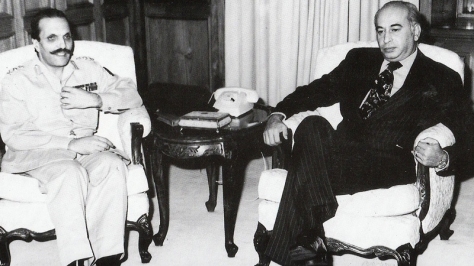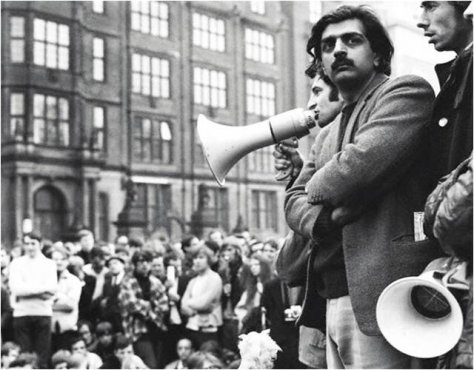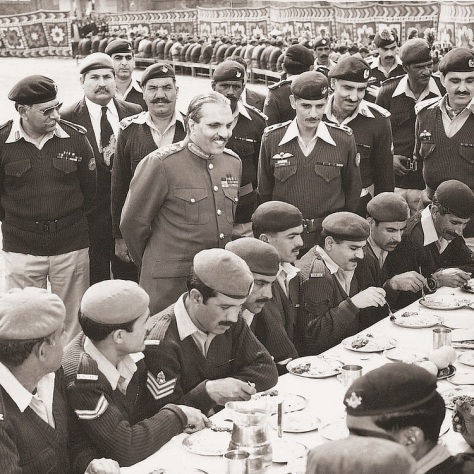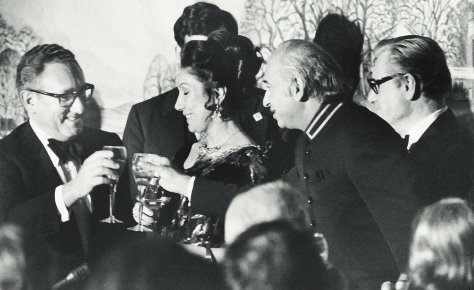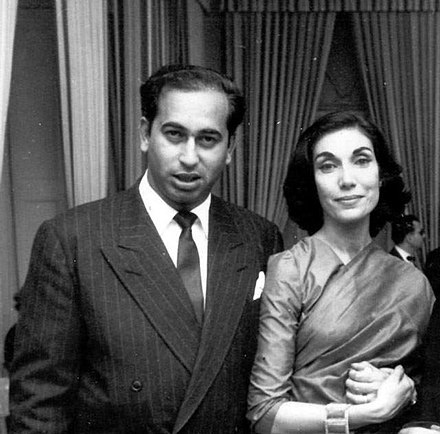STORY
Raghava rejects Shurpanakha‘s proposal which infuriates her and attempts to kill Raghava’s wife, Janaki. In retaliation, Lakshmana bleeds her nose with an arrow. Shurpanakha informs her brother Ravana. Ravana kidnaps Janaki which starts an epic war.
INTRODUCTION
Adipurush is a mythological action film based on the Sanskrit epic from ancient India called ‘Ramayana‘. Before I jump towards this cinematic disaster piece, let me give you a few insights about where this story is coming from.
Hinduism is arguably the world’s oldest religion. After four holy books of Vedas, two Sanskrit epics that together forms the Hindu mythological belief and constructs a university of faith are Mahabharata and Ramayana. And Adipurush is based on Ramayana.
A legendary poet Valmiki wrote this epic poem thousands of years ago. The poem covers Rama‘s life, his 14-year exile to the forest with his wife Sita and his brother Lakshmana. And then Sita’s kidnapping by Ravana that resulted in a war. And last of all, Rama’s return from exile.

Who was Rama? Rama was the prince of Ayodhya in the kingdom of Kosala. Kosala was one of the 16 realms that existed in the ancient India between 6th and 4th centuries in BCE that were collectively called “Mahajanapadas” which means great footold of people. Rama’s father was Dasharatha, the king of Kosala. He had three wives; Kausalya gave birth to Rama, Kaikeyi to Bharata, and Sumitra to twin sons Lakhsamana and Shatrughna. Bharata is the one who ruled Ayodhya when Rama was exiled.
So when Ravana kidnaps Sita to his Lanka, Rama and Lakshmana are informed about this shocking incident by Jatayu, the vulture, who tried to rescue Sita. Rama and Lakshmana seeks help from Sugriva and Bajrang Bali to raise an army against Ravana and liberate his wife from the captivity.
So readers, I have given you a lot of insight. I have shared you some bullet points of the story. So why is Adipurush a box-office disaster? Why the Indian viewers of Hindu faith have taken this film as a blasphemy? What went wrong? Almost everything.
REVIEW

See, I have read the bullet events that occurred in Ramayana and Mahabharata. And I think that Hindu mythology really gives us some interesting stories. Back in the 1990s, I happened to watch a few scenes from Ramanand Sagar‘s Ramayana that, if I am not wrong, used to be telecasted on Doordarshan. Whatever was happening in the show looked to be weird to me in those times. In my mid-teen, I was not a film critic but a typical Shah Rukh Khan fan. So, my opinion in the childhood matters the least or close to none.
But in 2023, with elite level of CGI and many technologies to ponder our unsettling surprises, I can easily envision that if Valmiki’s epic poem is given justice by its true loyalist, both Ramayana and Mahabharata will be shot with the aesthetics of a combined universes of James Cameron‘s Avatar and Peter Jackson‘s The Lord of The Rings.
But in 2023, the general audience especially of the Hindu faith are tortured to watch three hours of Adipurush which is in all sorts, outrageous and quite insulting to Hinduism. Most surprisingly, a film on Hinduism has severely messed up when Narendra Modi is the prime minister of India.
AGONIZING THE VIEWERS

Adipurush begins with a disclaimer that mentally instils the ‘Hindu’ audience to expect a volcano erupt from the presentation. It clearly states that ‘certain elements, characters, and events may have been interpreted or modified to suit the screen adaptation’. Later on, it also informs that they may have include dramatizations and fictional additions. I have always believed that if the film is based on a true story, just depict in its true nature with the highest level accuracy as possible. Because if you don’t, the film carries no purpose at all. And Adipurush is based on Hindu mythology that has become a religion to more than a billion people on the planet. So altering the story or trying to install the whole story in different aesthetics will do no good.
CASTING AND TERRIBLE PORTRAYALS

One of the massive issues with the film is an extremely enormous production budget which is ₹500–700 crore. With that budget, the film ridicules the audience with one of the worst visual effects ever paranoid. Also, with that budget, the casting and their costumes and make-ups don’t fit at all. One of the highest-paid actors in India, Prabhas, played the titular role of Rama. But more than Rama, he looked like Karna of Mahabharata. Plus, Rama sporting a moustache looked pretty odd because I think this has never happened before. Not even in animated films.
Beautiful Kriti Sanon plays Sita but by her attire, I assume she is reimagined as Sita in a modern setup. But Adipurush’s Sita also suffers from cheesy dialogues that corrupts the portrayal further. Imagine one of Sita’s responses to Ravana in Ashok Vatika is ”Ye kesa prem hay, Ravana? Mujhe koi aisi cheez do jo kuch din chale.” (What love is this, Ravana? Give me something that lasts for days).
Two more castings raised the eyebrows. One was Saif Ali Khan as Ravana and Devdatta Nage as Bajrang Bali. I dont have knowledge from what family did Ravana belong to but Adipurush’s Ravana, with his spiky hairstyle and Muslim beard, definitely comes from the house of Targaryen who instead of riding a dragon rides a gargoyle-like bat. Ravana’s original ride was called Pushpaka Vimana which was a flying chariot. So I am unsure what caused to change the ride whereas Pushpak Vimana was shown for a few seconds when Hauman flies to Sita. And then the bizarre alignment of Ravana’s heads in such an outrageous CGI. The ten heads of Ravana, if I am not wrong, always appears in one horizontal parallel. This is the first time, I see a 5×5 dramatizing of Ravana’s heads.
The portrayal of Hanuman is a joke. Neither the right actor was picked nor the physique was muscular enough to hand him over the mace. Plus, the dialogues he uttered were garbage. I felt that Devdatta was trying to be a silly Hanuman. But in any case, the makers surely had a lot of muscular choices for Hanuman. Overall, the casting on that massive budget needs an inquiry. Vatsal Sheth? Sonal Chauhan?
ZERO AESTHETICS
Adipurush doesn’t have a soul for magnificence in visual artistry or storytelling. I feel director Om Raut was being extremely lazy in giving a better look at this ancient world. A viewer cannot watch and say if the aesthetics are inspired. Almost every creativity in Adipurush will remind you of something and make you convince that the makers copied. Ravana Targaryen’s Westeros has striking resemblance with Marvel‘s Asgard. The legend is that Ravana’s Lanka was made of gold. Adipurush’s Lanka is made of coal. Almost everything is coal black. Bollywood has a tendency to dark the tone in the film when the world of the antagonist has to be portrayed as hell. But there is a level. Adipurush’s Lanka is more than elite level.
Not only that but Ravana Targaryen has an army of Orcs borrowed straight from Tolkien or perhaps Peter Jackson. There are a few sequences of Ravana Targaryen riding on his bat that will remind you the flights of the Witchking of Angmar.

Ravana’s son is one of the worst characterizations in the film. Those who have watched Vatsal Sheth giving a B-grade performance of Ravana’s son but doesn’t understand his value. Let me inform you what Indrajit meant in Ramayana. My research says that this guy nearly destroyed the race of vanara when he killed 670 million Vanaras in a single day. Vanara is the race of ape-people from where Hanuman belongs. They were created by Brahma to help Rama defeat Ravana.
Another legend is that Indrajit defeated both Rama and Lakshmana not once but twice in Ramayana. Plus, no warrior possessed all the three Trimurti astras other than Indrajit. Om Raut destroyed this character by making him the Lankan speedster Indrajit Allen aka The Flash. If I am not wrong, there is no mention of Indrajit being a speedster.
The vanara king Sugriva is a shameless replica of Caesar from the Planet of the Apes trilogy. Not only that, the dramatizing of the vanaras will precisely remind you of the Bandar Log from The Jungle Book. The jaw-dropping throat slitting scene is brutal false as that never occurred in Ramayana.
There is a sequence where Rama, Lakshmana, and a few vanaras are surrounded by the army of Orcs just like before the start of the Battle of Black Gate in The Lord of the Rings. And then comes a shot of the heroes warming up for the fight exactly like the first assembling of The Avengers.
In the beginning, two universes collide when Adipurush’s Rama fights against Harry Potter‘s Dementors. Whatever those creatures were, had no part in Ramayana.
WTF IS YOUR MESSAGE???
The laziness of filmmakers is so plentiful that the most controversial dialogue of the film ‘Jali Tere Baap Ki‘ which itself is so subpar to listen is taken from a spiritual motivational speaker, Amogh Lila Prabhu. He uttered Hanuman’s entire dialogue in one of his addresses with using the word ‘Ravana’ instead of baap.
Can you imagine the sages, deities, or the most respectful figures of some mythology or faith, to whom millions or billions of people dedicate their lives or respect to its zenith, speak such cringe, low-level, or pedestrian dialogues? And in all honesty, it is not funny for people of any faith. Imagine a Christian or Jewish film being highly disrespectful and inaccurate. As a Muslim, I will not tolerate if a film is based from the times of Muhammad and instead of depicting the true soul of the story, make the joke out of it.
Om Raut wrote and directed Adipurush, Manoj Muntashir wrote the dialogues. They shamelessly defended against all the criticism. Ramayana is such an incredible story and its live-action adaptation deserved a very careful planning to transform it into a live-action. There must be inquiry about the film’s production cost because with almost zero creativity and cheap editing resulting into one of the worst VFX results from an assumed ₹500-crore budget film questions the authenticity of truth. This film is no way more than ₹50 crore at all. Perhaps, a half of this budget is Prabhas’ pay for the film.
CLOSING REMARKS

Adipurush lacks the emotional value that would show the cultural and religious significance of the Hinduism. It just doesn’t remind you of the core or some essence in which Ramayana is valued to the hearts of the viewers but a three-hour Western portfolio and re-imagination of the ancient India unsuccessfully and unfaithfully resetting that war between good and evil.
Without watching any Ramayana or related show, I can blindly tell you that Adipurush is the last thing to remember for a Hindu content and unfortunately an unforgettable project for the wrongest possible reasons. If Om Raut and Manoj Muntashir are alive, that is only because they are Hindus. There is no excuse of this insult.
Those who want to try Adipurush, at your own risk. I wasted my three hours on the film and three days working on this content as a blogger and vlogger because this is my work. But you, let me save your 173 minutes and recommend you watching a 7-minute bhajan from Swades called ‘Pal Pal Hai Bhaari‘. That has music, poetry, essence of Ram, and Sita’s devotion.
Adipurush is a cinematic disaster which is lost in translation of the scripture that is sacred to the billions.
RATING 1/10
SUBSCRIBE TO MY YOUTUBE CHANNEL AND WATCH MY FILM REVIEW HERE
FOLLOW ‘THE DARK KNAIK’ ON OTHER SOCIAL PLATFORMS
TIKTOK https://www.tiktok.com/@thedarkknaik
FACEBOOK https://www.facebook.com/thedarkknaik
INSTAGRAM https://www.instagram.com/thedarkknaik/



